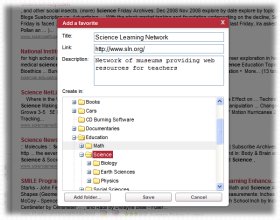|
Education
Web
Viewing 1-4 of 4 total results
R.10.K.6 Respond to a wide variety of texts by contributing to a reading journal/log which demonstrates appropriate comprehension skills, including picture and written responses R.10.K.7 Select familiar books to read from a variety of sources, including classroom, home...
1
0
R.10.K.6 Respond to a wide variety of texts by contributing to a reading journal/log which demonstrates appropriate comprehension skills, including picture and written responses R.10.K.7 Select familiar books to read from a variety of sources, including classroom, home, and school library R.10.1.8 Respond to a wide variety of texts by contributing to a reading journal which demonstrates appropriate comprehension skills, including picture and written
32
0
http://arkansased.org/teachers/pdf/ela_K-8_2003.pdf#page=32
arkansased.org/teachers/pdf/ela_K-8_2003.pdf#page=32
R.10.K.6 Respond to a wide variety <span class="highlight">of</span> texts by contributing to a reading <span class="highlight">journal</span>/log which demonstrates appropriate comprehension skills, including picture <span class="highlight">and</span> written responses R.10.K.7 Select familiar books to read from a variety <span class="highlight">of</span> sources, including classroom, home, <span class="highlight">and</span> school library R.10.1.8 Respond to a wide variety <span class="highlight">of</span> texts by contributing to a reading <span class="highlight">journal</span> which demonstrates appropriate comprehension skills, including picture <span class="highlight">and</span> written
95 Phi Delta Kappan Reading Research Quarterly Published by International Reading Association The Reading Teacher (elementary) Published by the International Reading Association. School Library Journal Both the print and the online versions review professional reading, book...
1
0
95 Phi Delta Kappan Reading Research Quarterly Published by International Reading Association The Reading Teacher (elementary) Published by the International Reading Association. School Library Journal Both the print and the online versions review professional reading, books for children and young adults, audiovisual materials, and computer software. The address for the print version is P.O. Box 16388, North Hollywood, CA 91615-6388. The online version is at http://www.slj.com. Voices
95
0
http://doe.sd.gov/contentstandards/languagearts/reading/07/Completed%20Reading.pdf#page=95
doe.sd.gov/contentstandards/languagearts/reading/07/Completed%20Reading.p...
95 Phi Delta Kappan Reading <span class="highlight">Research</span> Quarterly Published by International Reading Association The Reading Teacher (elementary) Published by the International Reading Association. School Library <span class="highlight">Journal</span> Both the print <span class="highlight">and</span> the online versions review professional reading, books for children <span class="highlight">and</span> young adults, audiovisual materials, <span class="highlight">and</span> computer software. The address for the print version is P.O. Box 16388, North Hollywood, CA 91615-6388. The online version is at http://www.slj.com. Voices
47 ACADEMIC JOURNALING Response Journals Description: Response Journals create a permanent record of what readers are feeling and thinking as they interact with literary or informational texts. It allows students to record their thoughts and emotional reactions about texts....
1
0
47 ACADEMIC JOURNALING Response Journals Description: Response Journals create a permanent record of what readers are feeling and thinking as they interact with literary or informational texts. It allows students to record their thoughts and emotional reactions about texts. Reading selections may be used as a springboard to inspire students’ feelings and thoughts about a topic. Most journal activities require thinking but do not demand a finished product. Students learn to write without fear
47
0
http://www.state.tn.us/education/ci/english/doc/READ_Gr_6-8_Content_Area.pdf#page=47
www.state.tn.us/education/ci/english/doc/READ_Gr_6-8_Content_Area.pdf#pag...
47 ACADEMIC JOURNALING Response Journals Description: Response Journals create a permanent record <span class="highlight">of</span> what readers are feeling <span class="highlight">and</span> thinking as they interact with literary or informational texts. It allows students to record their thoughts <span class="highlight">and</span> emotional reactions about texts. Reading selections may be used as a springboard to inspire students’ feelings <span class="highlight">and</span> thoughts about a topic. Most <span class="highlight">journal</span> activities require thinking but do not demand a finished product. Students learn to write without fear
§110.B. Middle School (M) use study strategies to learn and recall important ideas from texts such as preview, question, reread, and record (6-8). (11) Reading/literary response. The student expresses and supports responses to various types of texts. The student is...
1
0
§110.B. Middle School (M) use study strategies to learn and recall important ideas from texts such as preview, question, reread, and record (6-8). (11) Reading/literary response. The student expresses and supports responses to various types of texts. The student is expected to: (A) offer observations, make connections, react, speculate, interpret, and raise questions in response to texts (4-8); (B) interpret text ideas through such varied means as journal writing, discussion, enactment, and media
38
0
http://ritter.tea.state.tx.us/rules/tac/chapter110/ch110b.pdf#page=38
ritter.tea.state.tx.us/rules/tac/chapter110/ch110b.pdf#page=38
§110.B. Middle School (M) use study strategies to learn <span class="highlight">and</span> recall important ideas from texts such as preview, question, reread, <span class="highlight">and</span> record (6-8). (11) Reading/literary response. The student expresses <span class="highlight">and</span> supports responses to various types <span class="highlight">of</span> texts. The student is expected to: (A) offer observations, make connections, react, speculate, interpret, <span class="highlight">and</span> raise questions in response to texts (4-8); (B) interpret text ideas through such varied means as <span class="highlight">journal</span> writing, discussion, enactment, <span class="highlight">and</span> media
|
